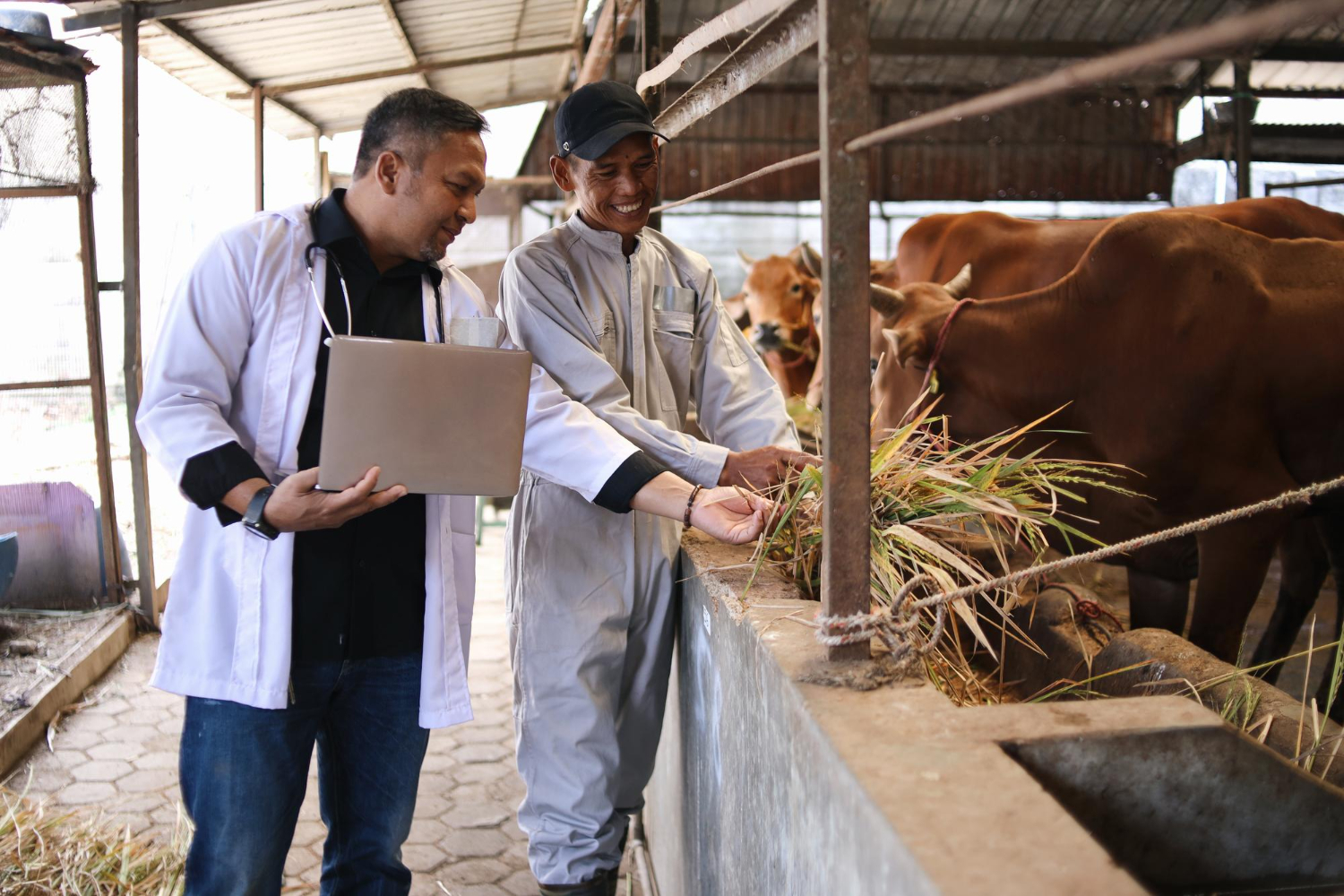Mr. Eky's Story: Surviving the Challenges of Dairy Farming

Mr. Eky, a dairy farmer from Bogor City, shared a true story that reflects the reality of many dairy farmers today. He faces unstable milk prices, difficulty obtaining quality feed, and ever-rising feed costs.
"The good concentrate we often use has run out. Now we're just using a regular brand, so if there's a decline in milk quality and quantity, that's normal," he said.
Amid these challenges, Mr. Eky began using VitalGraze® Dairy Cattle, a micronutrient premix specifically designed for dairy cows. After just one month of use, he began to see changes.
"The quality of my milk has improved. The total solids and fat content have increased. The quantity hasn't changed much, but I know this is a long-term process and won't be visible anytime soon," he said.
Mr. Eky's story proves that micronutrients, although invisible, are very important in determining the performance and quality of dairy cow production.
What Are Micronutrients and Why Are They Important for Dairy Cows?

Micronutrients are a group of nutrients, including vitamins and minerals, that cows require in small amounts but play a crucial role in maintaining physiological performance, health, and milk production. In dairy cows, micronutrient requirements increase, particularly during lactation, as the body must work harder to produce milk while maintaining immunity and reproductive function.
Several micronutrients, such as vitamins A, D₃, and E, function to maintain tissue integrity, strengthen the immune system, and prevent postpartum disorders such as retained placenta or mastitis. Meanwhile, minerals like zinc, selenium, manganese, and magnesium act as enzyme cofactors, support hormone function, and maintain udder health. Deficiencies in these micronutrients, although not immediately apparent, can lead to decreased milk production, impaired fertility, and an increased risk of infection.
Furthermore, a study by Goff & Horst (1997) highlighted the importance of magnesium and calcium in preventing hypocalcemia (milk fever), which often occurs early in lactation. Similarly, recent research by Abdallah et al. (2022) found that the right combination of micronutrients can increase total milk solids by 8–12% and improve the immunological status of dairy cows in hot climates.
Therefore, the use of specially designed premixes such as VitalGraze® Dairy Cattle is an important step in meeting the micronutrient needs of dairy cattle, especially in Indonesia which faces the challenges of high temperatures, low-quality forage, and high environmental infection pressure.
Signs of Micronutrient Deficiencies
- Stagnant or decreased milk production
- Placenta retained after calving (retained placenta)
- Calves born weak or stillborn
- Udders susceptible to mastitis
- Decreased estrus and fertility
- Low milk quality (fat, solids)
VitalGraze® Dairy Cattle
As an integrated solution, Ben Pharma Global presents VitalGraze® Dairy Cattle – a special premix for dairy cattle, formulated to face tropical challenges and feed fluctuations.
This product contains:
- High doses of vitamins A, D3, E, and C – support immunity, metabolism, and reproductive performance
- Calcium, phosphorus, magnesium, and other trace minerals – essential for milk secretion, udder health, and energy metabolism
- Xylanase enzymes – improve forage fiber digestion
- Lysine and D-Methionine – support milk protein synthesis and solids quality
Effective for Tropical Farming
Specifically designed for tropical conditions in Indonesia, VitalGraze® Dairy Cattle remains stable even when stored at high temperatures and supports livestock performance when facing:
- Fluctuating forage quality
- Hot temperatures and high humidity
- High infection pressure in the barn environment (mastitis and metritis)
Instructions for use
- Dairy cattle: 20-30 grams/head/day mixed into feed
- Bulk mix system: 1–5 kg per 200 kg of total feed
Suitable for:
- Lactating cows from early to peak production
- Small, medium, and large farms
Conclusion
Micronutrients may be small, but their impact is significant. Investing in the right micronutrients is the foundation of healthy, stable, and profitable milk production. Like Mr. Eky, you too can begin your journey to improving your farm by understanding your cows' nutritional needs.
Bibliography
- National Research Council (NRC). (2001). Nutrient Requirements of Dairy Cattle (7th revised ed.). Washington, DC: National Academies Press.
- Weiss, W. P. (2002). Relationship of mineral and vitamin supplementation with mastitis and milk quality. Journal of Dairy Science, 85(Suppl), E69–E77. https://doi.org/10.3168/jds.S0022-0302(02)74292-2
- Goff, J. P., & Horst, R. L. (1997). Physiological changes at parturition and their relationship to metabolic disorders. Journal of Dairy Science, 80(7), 1260–1268. https://doi.org/10.3168/jds.S0022-0302(97)76055-7
- Abdallah, A. G., El-Sayed, M., & Dessouki, A. A. (2022). Effects of dietary vitamin and mineral supplementation on milk composition and immune status of dairy cows under heat stress conditions. Tropical Animal Health and Production, 54, 1–9. https://doi.org/10.1007/s11250-022-03106-5


